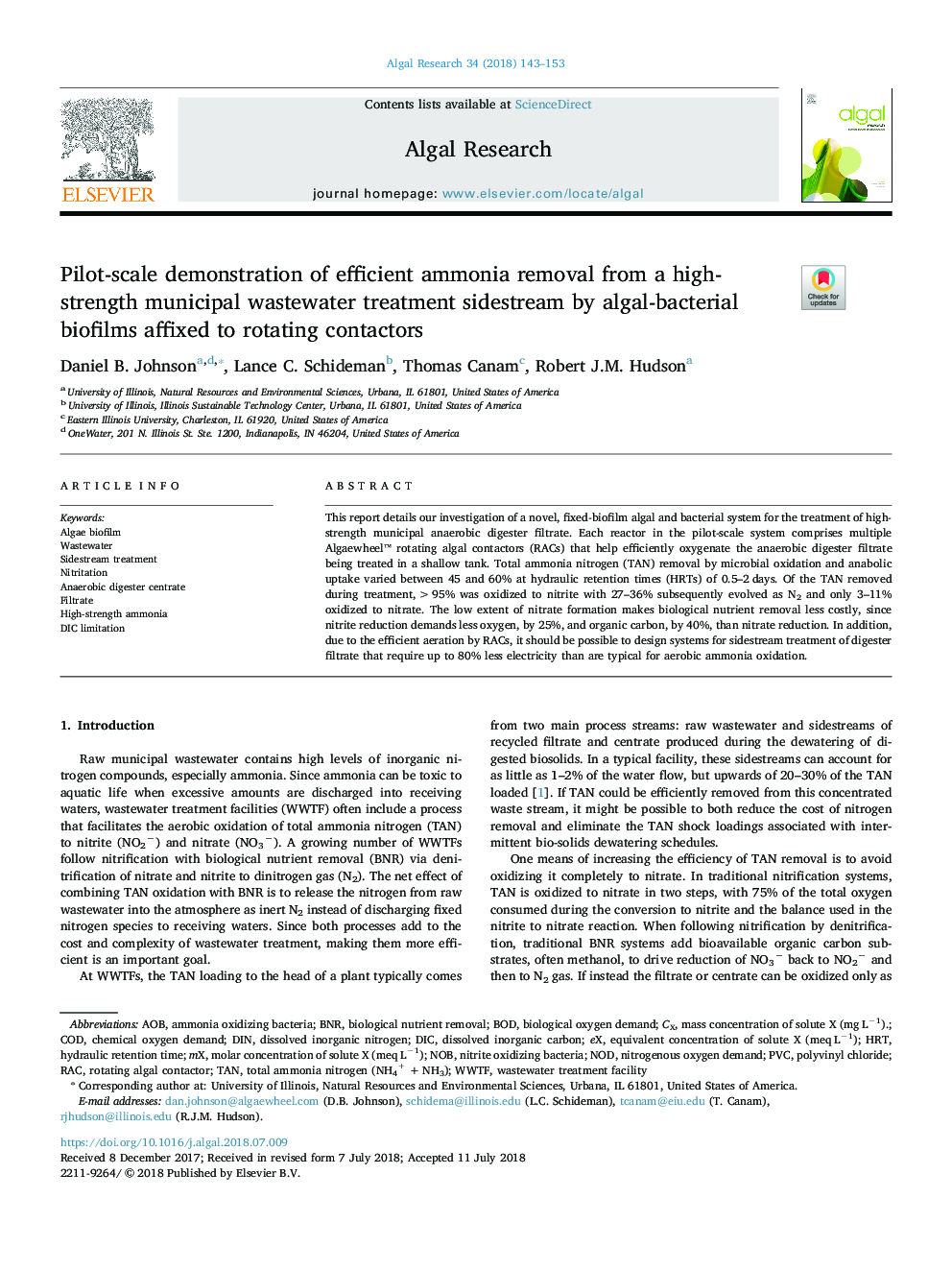| Article ID | Journal | Published Year | Pages | File Type |
|---|---|---|---|---|
| 8085667 | Algal Research | 2018 | 11 Pages |
Abstract
This report details our investigation of a novel, fixed-biofilm algal and bacterial system for the treatment of high-strength municipal anaerobic digester filtrate. Each reactor in the pilot-scale system comprises multiple Algaewheel⢠rotating algal contactors (RACs) that help efficiently oxygenate the anaerobic digester filtrate being treated in a shallow tank. Total ammonia nitrogen (TAN) removal by microbial oxidation and anabolic uptake varied between 45 and 60% at hydraulic retention times (HRTs) of 0.5-2â¯days. Of the TAN removed during treatment, >95% was oxidized to nitrite with 27-36% subsequently evolved as N2 and only 3-11% oxidized to nitrate. The low extent of nitrate formation makes biological nutrient removal less costly, since nitrite reduction demands less oxygen, by 25%, and organic carbon, by 40%, than nitrate reduction. In addition, due to the efficient aeration by RACs, it should be possible to design systems for sidestream treatment of digester filtrate that require up to 80% less electricity than are typical for aerobic ammonia oxidation.
Keywords
Related Topics
Physical Sciences and Engineering
Energy
Renewable Energy, Sustainability and the Environment
Authors
Daniel B. Johnson, Lance C. Schideman, Thomas Canam, Robert J.M. Hudson,
